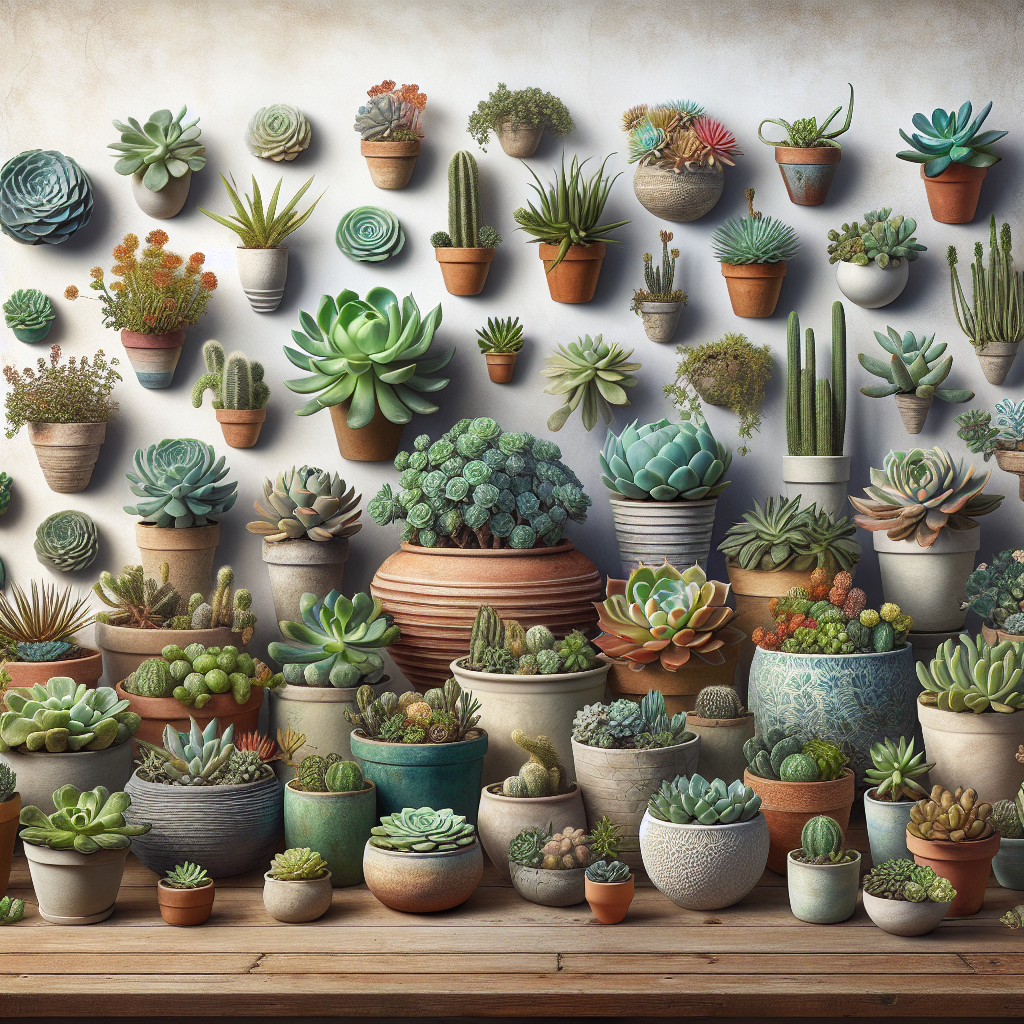Succulents are a popular choice for indoor and outdoor gardens due to their unique appearance and low maintenance requirements. One of the most common ways to grow succulents is in containers, which allows for easy movement and provides a space-saving option for those with limited garden space. In this article, we will discuss the basics of growing succulents in containers, including choosing the right container, selecting the ideal soil mix, proper watering and sunlight requirements, as well as tips for caring for your plants.
Choosing the Right Container
When it comes to selecting a container for your succulents, there are a few key factors to consider. First and foremost, you want to choose a container that has good drainage. Succulents are prone to root rot if they sit in waterlogged soil, so it is essential that excess water can easily drain out of the container. Terra cotta pots are a popular choice for succulent containers because they are porous and allow excess moisture to evaporate quickly.
In addition to drainage, you also want to consider the size of the container. Succulents have shallow roots, so a shallow container is ideal for them. However, you also want to make sure that the container is large enough to accommodate your plant’s root system and allow for growth.
Lastly, consider the aesthetic appeal of the container. Succulents come in a wide variety of shapes and colors, so choose a container that complements your plant’s unique characteristics.
Selecting the Ideal Soil Mix
Succulents have specific soil requirements that differ from traditional houseplants. They thrive in well-draining soil that allows water to pass through quickly. A good succulent soil mix typically consists of equal parts potting soil, sand or perlite (to improve drainage), and peat moss or coconut coir (to retain moisture). You can also purchase pre-made succulent soil mixes at your local garden center.
When selecting a soil mix for your succulents, avoid using heavy clay soils or regular potting mixes that retain too much moisture. These types of soils can lead to root rot and other problems for your plants.
Proper Watering and Sunlight Requirements
One of the most common mistakes people make when growing succulents is overwatering them. Succulents are adapted to survive in arid environments with minimal rainfall, so they do not require frequent watering. In general, it is best to water your succulents only when the top inch of soil is dry. This will prevent root rot and other issues caused by overly wet conditions.
When watering your succulent plants in containers, make sure to water them thoroughly until excess water drains out from the bottom of the pot. Then allow the soil to dry out completely before watering again.
In terms of sunlight requirements, most succulents prefer bright indirect light or direct sunlight for several hours each day. However, some varieties may prefer more shade or less intense light depending on their specific needs. Be sure to research your plant species before placing them in direct sunlight or shade.
Tips for Caring for Your Succulent Plants
To ensure healthy growth and longevity of your succulent plants in containers, there are a few additional tips you can follow:
1. Rotate your plants regularly: Succulents tend to grow towards sunlight sources over time if not rotated frequently. Rotating them every few weeks will help maintain an even growth pattern.
2. Fertilize sparingly: While it is not necessary to fertilize your succulent plants often, you can apply a diluted liquid fertilizer once every few months during their active growing season.
3. Repot when necessary: As your succulent plants grow larger or outgrow their containers, repotting may be necessary. When repotting, be sure to use fresh potting mix and provide adequate drainage.
4. Keep an eye out for pests: Aphids, mealybugs, scale insects, and spider mites are common pests that can infest succulent plants in containers. Check regularly for signs of pests such as yellowing leaves or sticky residue on plant surfaces.
5.Protect from extreme temperatures: While many varieties of succulents are cold-hardy or heat-tolerant,
By following these basic guidelines on growing succulents in containers – choosing the right container with good drainage,
selecting an appropriate soil mix,
providing proper watering
sunlight requirements
and following additional care tips – you can enjoy beautiful
healthy succlent plants indoors or outdoors all year round.
In conclusion
Growing suculent plants can be rewarding hobby whether you’re new gardener looking add some greenery indoor space simply enjoys tending little green friends.
with proper care feeding black thumb into green thumb indeed ,
you’ll soon find yourself surrounded with vibrant , happy suculent , adding touch nature living spaces .














